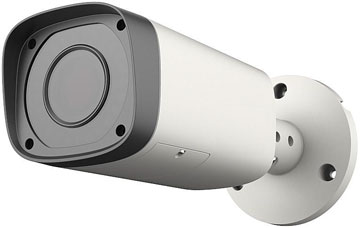 Each field and industry have their own unique essentials and jargons; CCTV system is not an exception. This is to why things can be rather tricky, especially for beginners. Therefore, a cheat sheet like this, may be of help.
Each field and industry have their own unique essentials and jargons; CCTV system is not an exception. This is to why things can be rather tricky, especially for beginners. Therefore, a cheat sheet like this, may be of help.
Before the jargons, there is a need to know that all good CCTV systems shall embed and specify these features. First of all, the number of cameras. By knowing the number of cameras, users are able to divide their intended surveillance areas into targeted zones, so as to dedicate respective responsibilities to each camera. Moreover, when emergency happens, users can also easily trace its source by going to a particular camera.
Next, there is a need to know if the cameras are in day or night vision and if they are weather resistant. This is important as it will help users to determine if the cameras are to be placed indoor or outdoor. Besides, users should also pay attention to the amount of CCTV lines the cameras are able to produce. In most cases, the higher the number, the better the quality.
Third, the kind of recording resolution which the CCTV system comes with and how footages are going to be installed. The worst nightmare to many users are usually the inability to get access to recorded videos. Before employing a CCTV system fully, users should have a clear idea on the kind of images that the system is capable of producing and if there is any backup system for them to transfer recorded data safely. Last but not least, users should also ensure they have access to recorded images at all time, whether on site or remotely.
In terms of jargons, the most common ones will probably be DVR and NVR. DVR stands for Digital Video Recorder. It refers to recorders which stores its videos in digital format. In the case of CCTV system, it means recorders receive information through an analogue broadcast. NVR is the short form of Network Video Recorder, referring to recorders that connect to a computer network to receive and store video information. The video information can come from any source including cameras or other devices that the recorder regonises.
TV lines (TVL) are unique to analogue CCTV cameras, the number of TVL produced will determine the quality of footages produced. Hence TVL is one of the most essential resolution measures that users have to consider while choosing a CCTV system. The higher the presented number of TVL, the better the recorded images.
Internet Protocol or IP cameras. This is the type of CCTV cameras that send and receive data via a network and the internet. IP cameras usually come with high quality imagery but users have to beware of the relatively larger amount of storage space they need to cater, especially prolong period of recording is required.
The list can be infinite, as CCTV system progresses almost in a daily manner. Hence, if one is doubt, always consult a surveillance expert for help.
